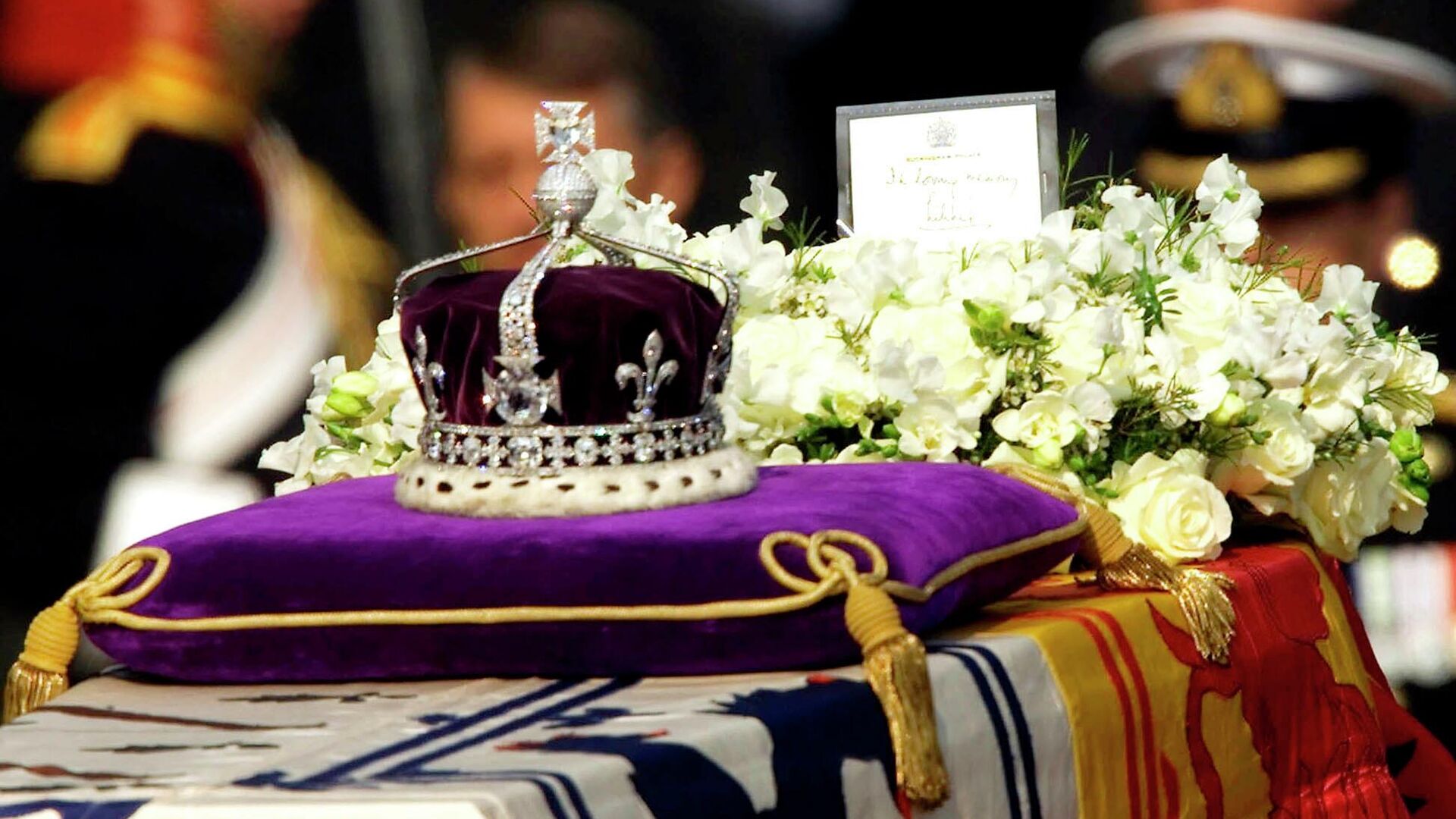https://sputnikglobe.com/20221014/india-seeks-satisfactory-resolution-with-uk-on-koh-i-noor-diamond-dispute-1101842989.html
India Seeks 'Satisfactory Resolution' With UK on Koh-i-Noor Diamond Dispute
India Seeks 'Satisfactory Resolution' With UK on Koh-i-Noor Diamond Dispute
Sputnik International
'Koh-i-Noor', which means "mountain of light" in Persian, is set in the crown of the Queen Mother and put on display in the Tower of London. India has been... 14.10.2022, Sputnik International
2022-10-14T12:39+0000
2022-10-14T12:39+0000
2023-05-28T15:21+0000
world
uk royal family
royal family
diamond
indian foreign ministry
camilla parker bowels
united kingdom (uk)
https://cdn1.img.sputnikglobe.com/img/07e6/09/10/1100868438_0:43:1947:1138_1920x0_80_0_0_7ef0b07a8436fef3feabae52f8ee8204.jpg
India seeks a "satisfactory resolution" with the UK government on the retrieval of the iconic Koh-i-Noor diamond, the Foreign Ministry said on Friday.The remarks came amid a controversy over whether the diamond will be used when Camilla Bowles Paker is crowned Queen Consort on May 6, 2023, alongside her husband, who will be anointed as King Charles III. British media reported that Camilla may not be crowned with the Koh-i-Noor over concerns it may spark negative sentiments towards the UK, particularly from India.Mindful of the sentiments that have been expressed by the Indian public and parliament, Delhi’s Foreign Ministry has time and again raised the matter of the return of the diamond and other antiquities with the UK government.As per the Archaeological Survey of India, the legendary diamond was unearthed in the Golconda mines in central southern India, between the 12th-14th centuries.Records show that it was in the possession of the Mughals till the 16th century. Later, Persians seized it from the Mughals and then the Afghans.According to the Royal Collection Trust, the disputed diamond was “surrendered” to Queen Victoria in 1849 as part of the Treaty of Lahore by the last Sikh Emperor of India Maharaja Duleep Singh when he was 11 years old.
united kingdom (uk)
Sputnik International
feedback@sputniknews.com
+74956456601
MIA „Rossiya Segodnya“
2022
Rishikesh Kumar
https://cdn1.img.sputnikglobe.com/img/07e4/08/04/1080055820_0:0:388:389_100x100_80_0_0_40018ee210946d65d49ffba4f4c008e1.jpg
Rishikesh Kumar
https://cdn1.img.sputnikglobe.com/img/07e4/08/04/1080055820_0:0:388:389_100x100_80_0_0_40018ee210946d65d49ffba4f4c008e1.jpg
News
en_EN
Sputnik International
feedback@sputniknews.com
+74956456601
MIA „Rossiya Segodnya“
Sputnik International
feedback@sputniknews.com
+74956456601
MIA „Rossiya Segodnya“
Rishikesh Kumar
https://cdn1.img.sputnikglobe.com/img/07e4/08/04/1080055820_0:0:388:389_100x100_80_0_0_40018ee210946d65d49ffba4f4c008e1.jpg
uk royal family, royal family, diamond, indian foreign ministry, camilla parker bowels, united kingdom (uk)
uk royal family, royal family, diamond, indian foreign ministry, camilla parker bowels, united kingdom (uk)
India Seeks 'Satisfactory Resolution' With UK on Koh-i-Noor Diamond Dispute
12:39 GMT 14.10.2022 (Updated: 15:21 GMT 28.05.2023) 'Koh-i-Noor', which means "mountain of light" in Persian, is set in the crown of the Queen Mother and put on display in the Tower of London. India has been advocating for the return of this 105.6-carat diamond since it gained independence in 1947.
India seeks a "satisfactory resolution" with the UK government on the retrieval of the iconic Koh-i-Noor diamond, the Foreign Ministry said on Friday.
"We have been raising this matter from time to time with the UK government and we will continue to explore ways and means obtaining satisfactory resolution of the matter," Arindam Bagchi, Foreign Ministry spokesperson, said during the weekly media briefing.
The remarks came amid a controversy over whether the diamond will be used when Camilla Bowles Paker is crowned Queen Consort on May 6, 2023, alongside her husband, who will be anointed as King Charles III. British media reported that Camilla
may not be crowned with the Koh-i-Noor over concerns it may spark negative sentiments towards the UK, particularly from India.
Mindful of the sentiments that have been expressed by the Indian public and parliament, Delhi’s Foreign Ministry has time and again raised the matter of the return of the diamond and other antiquities with the UK government.
As per the Archaeological Survey of India, the legendary diamond was unearthed in the Golconda mines in central southern India, between the 12th-14th centuries.
Records show that it was in the possession of the Mughals till the 16th century. Later, Persians seized it from the Mughals and then the Afghans.
According to the Royal Collection Trust, the disputed diamond was “surrendered” to Queen Victoria in 1849 as part of the Treaty of Lahore by the last Sikh Emperor of India Maharaja Duleep Singh when he was 11 years old.



